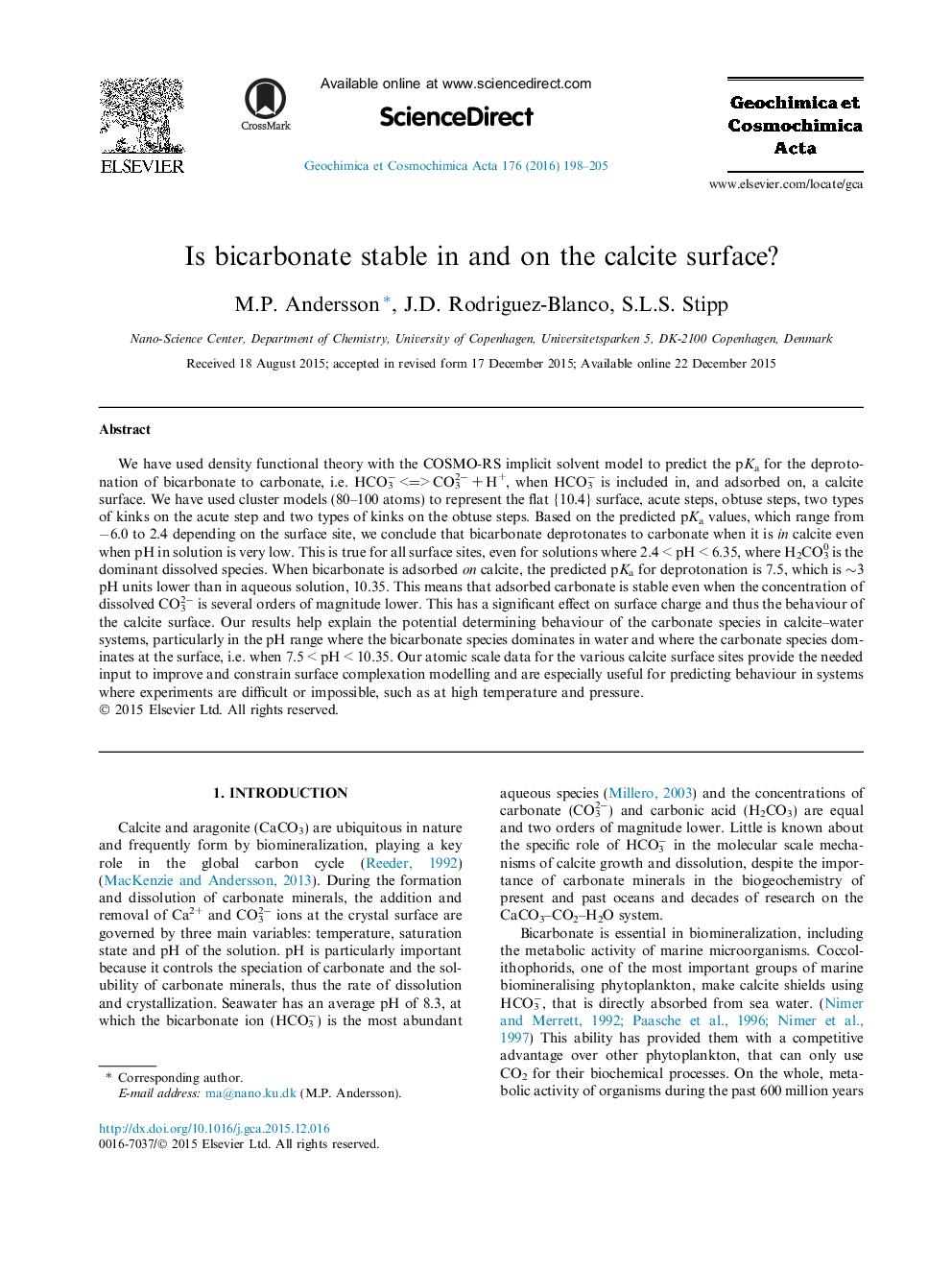| Article ID | Journal | Published Year | Pages | File Type |
|---|---|---|---|---|
| 6437622 | Geochimica et Cosmochimica Acta | 2016 | 8 Pages |
Abstract
We have used density functional theory with the COSMO-RS implicit solvent model to predict the pKa for the deprotonation of bicarbonate to carbonate, i.e. HCO3â <=> CO32â + H+, when HCO3â is included in, and adsorbed on, a calcite surface. We have used cluster models (80-100 atoms) to represent the flat {10.4} surface, acute steps, obtuse steps, two types of kinks on the acute step and two types of kinks on the obtuse steps. Based on the predicted pKa values, which range from â6.0 to 2.4 depending on the surface site, we conclude that bicarbonate deprotonates to carbonate when it is in calcite even when pH in solution is very low. This is true for all surface sites, even for solutions where 2.4 < pH < 6.35, where H2CO30 is the dominant dissolved species. When bicarbonate is adsorbed on calcite, the predicted pKa for deprotonation is 7.5, which is â¼3 pH units lower than in aqueous solution, 10.35. This means that adsorbed carbonate is stable even when the concentration of dissolved CO32â is several orders of magnitude lower. This has a significant effect on surface charge and thus the behaviour of the calcite surface. Our results help explain the potential determining behaviour of the carbonate species in calcite-water systems, particularly in the pH range where the bicarbonate species dominates in water and where the carbonate species dominates at the surface, i.e. when 7.5 < pH < 10.35. Our atomic scale data for the various calcite surface sites provide the needed input to improve and constrain surface complexation modelling and are especially useful for predicting behaviour in systems where experiments are difficult or impossible, such as at high temperature and pressure.
Related Topics
Physical Sciences and Engineering
Earth and Planetary Sciences
Geochemistry and Petrology
Authors
M.P. Andersson, J.D. Rodriguez-Blanco, S.L.S. Stipp,
